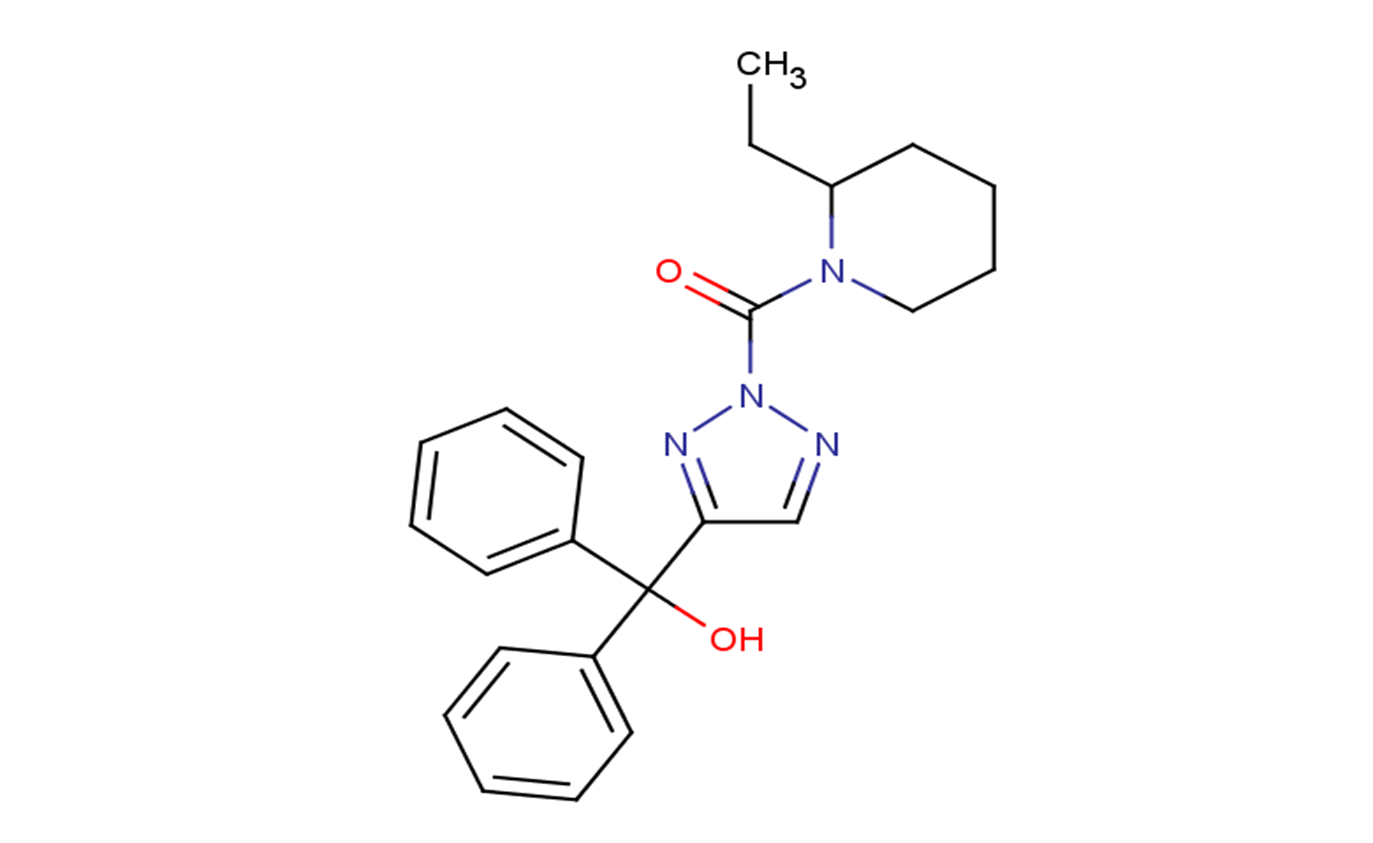
ML226
CAS No. 2055172-43-3
ML226( ML-226 )
Catalog No. M23918 CAS No. 2055172-43-3
ML226 is a α/β hydrolase domain-containing protein 11 (ABHD11) inhibitor that inhibits ABHD11 in vitro and in situ.
Purity : >98% (HPLC)
 COA
COA
 Datasheet
Datasheet
 HNMR
HNMR
 HPLC
HPLC
 MSDS
MSDS
 Handing Instructions
Handing Instructions
| Size | Price / USD | Stock | Quantity |
| 5MG | 491 | In Stock |


|
| 10MG | 708 | In Stock |


|
| 25MG | 1071 | In Stock |


|
| 50MG | 1467 | In Stock |


|
| 100MG | Get Quote | In Stock |


|
| 200MG | Get Quote | In Stock |


|
| 500MG | Get Quote | In Stock |


|
| 1G | Get Quote | In Stock |


|
Biological Information
-
Product NameML226
-
NoteResearch use only, not for human use.
-
Brief DescriptionML226 is a α/β hydrolase domain-containing protein 11 (ABHD11) inhibitor that inhibits ABHD11 in vitro and in situ.
-
DescriptionML226 is a α/β hydrolase domain-containing protein 11 (ABHD11) inhibitor that inhibits ABHD11 in vitro and in situ.
-
In Vitro——
-
In Vivo——
-
SynonymsML-226
-
PathwayOthers
-
TargetOther Targets
-
RecptorABHD11
-
Research Area——
-
Indication——
Chemical Information
-
CAS Number2055172-43-3
-
Formula Weight390.49
-
Molecular FormulaC23H26N4O2
-
Purity>98% (HPLC)
-
SolubilityDMSO:10 mM
-
SMILESCCC1CCCCN1C(=O)N2N=CC(=N2)C(C3=CC=CC=C3)(C4=CC=CC=C4)O
-
Chemical Name——
Shipping & Storage Information
-
Storage(-20℃)
-
ShippingWith Ice Pack
-
Stability≥ 2 years
Reference
1.Hsu K L , Speers A E , Spicer T , et al. Optimization and characterization of a triazole urea inhibitor for diacylglycerol lipase beta (DAGL-β)[J]. National Center for Biotechnology Information (US), 2010.
molnova catalog



related products
-
3,5-Di-tert-butylben...
3,5-Di-tert-butylbenzaldehyde may be used in the synthesis of the following:5-p-pyridyl-15-(3,5-di-tert-butylphenyl)porphyrin via condensation reaction with 4-pyridinecarboxaldehyde and 2,2′-dipyrrylmethane.3,5-di-tert-butylphenyl-dipyrromethane via reaction with pyrrole in the presence of trifluoroacetic acid.3,5-di-tert-butyl-2-nitrobenzaldehyde via nitration reaction.
-
Coenzyme Q10
Extracted from Coenzyme Q10;Suitability:Chloroform,benzene and carbon tetrachloride.
-
TNG908
TNG908 is an orally active and selective MTAP-co-PRMT5 inhibitor that crosses the blood-brain barrier and kills MTAP-deficient cancers.



 Cart
Cart
 sales@molnova.com
sales@molnova.com


